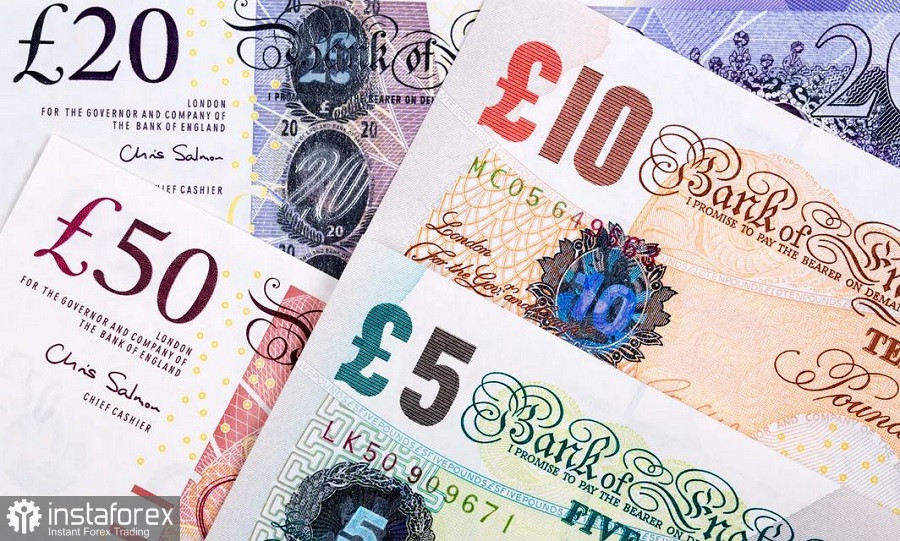The pound has settled near the area of 1.18 against the US dollar as the greenback eased and the employment data in the UK turned out to be positive. Unlike other majors, GBP/USD has been less volatile lately. After a 400-pip surge last week caused by the US CPI report, traders are now acting cautiously. The nearest resistance level is found at 1.1890 which coincides with the upper band of the Bollinger Bands Indicator on the daily and 4-hour charts. This is the upper target of the price range. A breakout of this range will pave the way for the price to the levels of 1.19 and even 1.20.

Yet, it is still too early to talk about these targets. Traders are very cautious now and might be a bit skeptical about the upside potential of the British pound. The fact is that the bullish momentum of the pound/dollar pair has emerged only thanks to a weaker USD. Meanwhile, the pound itself is still vulnerable. The reaction of the market to the recent jobs data release in the UK was rather moderate which is another proof that GBP is not very strong. However, the report showed positive results that should have been evaluated by the market.
The number of new claims for unemployment benefits advanced by just 3,300 while analysts expected to see a rise of 17,000. The average earnings index also rose by 6.0% year-on-year (with bonuses) and by 5.7% (without bonuses). The average earnings index excluding bonuses has been steadily rising for the 6th month in a row. It has reached its highest reading since September 2021. The unemployment rate changed slightly and increased to 3.6% from 3.5%. Still, the indicator is holding near 48-year lows reflecting the current tendency in the UK labor market.
In other words, the UK labor market is rather resilient which has been again proved by the fresh jobs report. However, the pound's reaction to the latest data was somehow muted. Traders might be keeping in mind the recent BoE's meeting where the regulator gave very pessimistic forecasts. In particular, the central bank projected the acceleration of inflation in annual terms to 11% in the fourth quarter of 2022. The regulator also warned that the UK economy had gloomy prospects ahead. The Bank of England stated that the UK economy had actually entered a recession that might last from 1.5 to 2 years. This recession might be even longer than the one that happened in 2008 when the global financial crisis took place.
What is more, the UK regulator has raised the rate by 75 basis points. However, only 7 out of 9 members of the Monetary Policy Committee voted for the 75-basis-point increase. Notably, one of the members suggested a 50-point increase while the second one voted for a 25-point increase.
Now markets anticipate the BoE to slow the pace of monetary tightening as soon as this December. Thus, strategists at Rabobank expect to see a rate hike of 50 basis points at the meeting in December. They also think that the rate-hiking cycle will end at 4.75%. Currently, the BoE's rate is holding at 3%.
Such prospects will definitely limit the energy of the pound bulls. Moreover, Fed Chair Jerome Powell said that the Fed would take the upper rate target even higher than before.
So, at the moment, the US dollar is setting the tone for GBP/USD trading. Today, the greenback is suffering pressure across the board due to a higher risk appetite boosted by the news from China. Beijing has decided to ease coronavirus restrictions which was viewed by the market as the first step towards the end of the "zero tolerance" COVID-19 policy. Against this backdrop, the Hang Seng Index rose by more than 3% while the Shanghai Composite Index was up by 1.5%. Surprisingly, the risk-on sentiment increased even though the recent macroeconomic reports from China showed that the economy has contracted. Thus, China's volume of industrial production increased by 5% year-on-year last month against the forecast of 5.2%. Retail sales dropped by 0.5% in October after a rise of 2.5% in September.
The pound/dollar pair still maintains its upside potential and may soon reach the resistance level of 1.1890 (the upper band of the Bollinger Bands indicator in D1). Buyers may even attempt to test the area of 1.19. Traders need to be careful there and lock in profit on long positions as the bullish trajectory of the pair largely depends on the state of the US dollar.
 English
English 
 Русский
Русский Bahasa Indonesia
Bahasa Indonesia Bahasa Malay
Bahasa Malay ไทย
ไทย Español
Español Deutsch
Deutsch Български
Български Français
Français Tiếng Việt
Tiếng Việt 中文
中文 বাংলা
বাংলা हिन्दी
हिन्दी Čeština
Čeština Українська
Українська Română
Română

